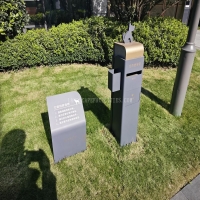Welcome to the website for landscape facilities products and knowledge.
How does the table’s design support the trend toward more flexible or hybrid work models?
The evolution of office furniture, particularly tables, has become instrumental in facilitating the global shift toward flexible and hybrid work models. Contemporary table designs transcend their traditional role as mere surfaces, transforming into dynamic tools that actively support diverse work styles and changing spatial requirements.
Modern tables feature modular configurations that allow seamless adaptation to various activities. Mobile units with locking casters can be quickly rearranged for impromptu brainstorming sessions or individual focus work. Integrated power solutions, including wireless charging pads and strategically placed USB ports, eliminate cable clutter while supporting the technological needs of a mobile workforce. Height-adjustable mechanisms cater to both seated and standing preferences, promoting physical wellbeing throughout the workday.
These design elements directly address the core challenges of hybrid work environments. Tables with embedded video conferencing technology and acoustic dampening properties create optimal conditions for virtual collaboration. Lightweight materials and nesting capabilities enable efficient space utilization, allowing organizations to maximize their real estate while accommodating fluctuating attendance patterns. The psychological impact is equally significant—well-designed tables establish visual harmony and functional clarity that reduces cognitive load and enhances productivity.
Furthermore, the aesthetic flexibility of modern tables supports organizational branding and cultural expression. From warm wood finishes that create residential comfort to sleek industrial designs that inspire innovation, tables serve as anchor points that define workspace character. This intentional design approach fosters emotional connection to physical workspaces, making office days feel purposeful and distinct from remote work experiences.
The most successful table designs incorporate biophilic elements through natural material selections and organic shapes, which have been demonstrated to reduce stress and improve cognitive function. These features create welcoming environments that encourage voluntary office attendance—a crucial factor in maintaining organizational cohesion in hybrid models. As work continues to evolve, table design will remain at the forefront of creating spaces that balance individual autonomy with collective engagement, ultimately supporting both business objectives and human wellbeing in the new era of work.
Related search:

Recommendation
Outdoor cat and dog feces trash can; Community pet trash can; Metal multi-color design